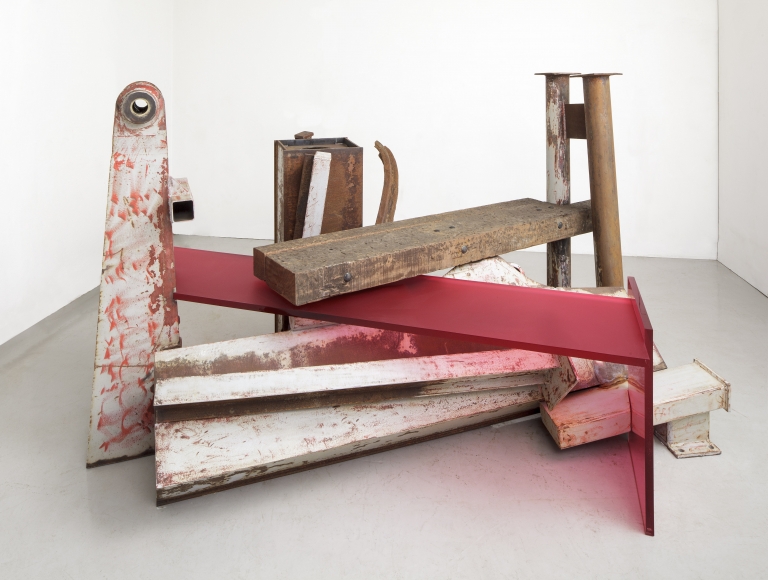Opinion
Anthony Caro: Did Old Age Set Free His Inner Comic?
THE DAILY PIC: In Caro’s late work at Mitchell-Innes & Nash, plastic adds levity to his heavy metal.

THE DAILY PIC: In Caro’s late work at Mitchell-Innes & Nash, plastic adds levity to his heavy metal.

Blake Gopnik

THE DAILY PIC (#1715): The one time I met Anthony Caro, when I was studying in England in the early 1990s, he struck me as a pretty dour chap, making art that was equally unsmiling. In those salad days of Postmodern flux, Caro seemed to represent the last gasp of self-absorbed High Modernism, with all its Dos and Don’ts and absolutes.
That’s why I was so pleased, and surprised, by the show called “Anthony Caro: First Drawings Last Sculptures,” in the Chelsea space of Mitchell-Innes & Nash in New York. It is full of levity and wit.
The “Last Sculptures” of the show’s title were made in the couple of years before Caro’s death in 2013, and the striking thing about them is that they include massive sheets of clear acrylic plastic, most often in bright colors. Even after almost a century of use as an art material, plastic—and especially colored plastic—still comes across as goofy and irreverent, and so do the sculptures where Caro employed it. It feels as though a Disney animator had got hold of Caro’s heavy–metal assemblages and decided to add to them. (In the 2013 piece I’m showing, titled Terminus, the plastic’s color is given as “frosted raspberry red.” Need I say more?).
Once a cartoonish vibe takes hold of the works, the weighty hunks of steel in them start seeming faintly comic as well. Some of Caro’s steel consists of repurposed found objects: a hopper used to cart sand; a chunk from some kind of gantry. Rather than being elevated from their humble origins thanks to Caro’s high art, these objects now seem to keep Caro’s art down-to-earth – almost like found anchors that keep his foofy acrylic from blowing away.
In light of the new sculptures, Caro’s “first drawings,” from the 1950s, also take on a vaguely cartoonish, lighthearted air. Their figuration dates to the moment before High Modern abstraction could claim to rule the roost: Picasso and his ilk—including the young Caro—were still putting up some resistance to Clement Greenberg and his gang. The drawings are full of energy, questioning, and even doubt. Do they hint at a Postmodernism to come? (Image courtesy Mitchell-Innes & Nash).
For a full survey of past Daily Pics visit blakegopnik.com/archive.